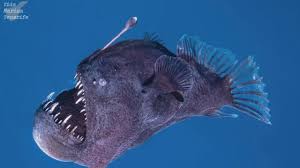Explore the Mysterious World of the Anglerfish

Introduction to Anglerfish
The anglerfish, a unique deep-sea creature, has captured the fascination of marine biologists and enthusiasts alike due to its peculiar adaptations and intriguing hunting methods. Found primarily in the depths of the ocean, anglerfish exhibit remarkable features that allow them to thrive in environments where sunlight barely penetrates. With ongoing discoveries regarding their biology and habitats, anglerfish continue to be a subject of scientific interest and biodiversity studies.
Distinctive Features of Anglerfish
Anglerfish are particularly notable for their bioluminescent lure, which protrudes from their heads. This lure, a modified dorsal fin, glows due to a combination of bacteria and chemical reactions, attracting prey in the dark waters of the ocean. The anglerfish’s mouth contains long, sharp teeth, allowing it to capture relatively large prey despite its small body size. They exhibit sexual dimorphism, with males being significantly smaller than females—a noteworthy adaptation in the harsh deep-sea environment where mate availability can be limited.
Habitat and Distribution
Primarily residing in the abyssal regions of the Atlantic and Antarctic Oceans, anglerfish inhabit depths ranging from 200 meters to over 2,000 meters below sea level. This dark environment poses challenges for most marine life, yet anglerfish have adapted through specialized physiological features like an expandable stomach that allows them to consume prey larger than themselves. Their ability to survive and thrive in such extreme conditions makes them vital to the deep-sea ecosystem.
Significance in Marine Ecosystems
Anglerfish play an essential role in the marine food web, serving as both predator and prey. Their unique hunting strategy allows them to be efficient carnivores in their ecosystem, while they too serve as food for larger fish species. Additionally, studying anglerfish contributes to our understanding of marine biodiversity and the adaptations necessary for survival in extreme environments, emphasizing the importance of ocean conservation.
Conclusion: The Future of Anglerfish Research
As researchers continue to explore the mysteries of deep-sea life, anglerfish remain a focal point due to their unique characteristics and ecological significance. With advancements in underwater exploration technology, scientists hope to uncover more about their behavior, reproduction, and interactions within their environment. Understanding anglerfish not only enriches our knowledge of marine biology but also highlights the critical need for sustainable practices to protect ocean habitats. Future studies could focus on the impacts of climate change and pollution, which pose threats to marine species across the globe, including the enigmatic anglerfish.









